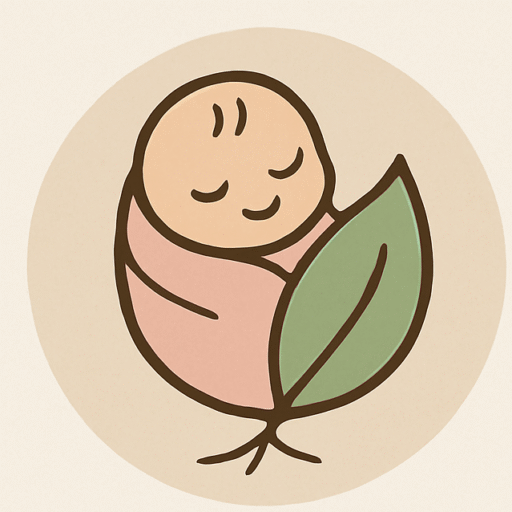Breastfeeding Myths Busted
I still remember those first days of breastfeeding—sitting in the nursery at 3 AM, trying not to cry while my newborn latched and unlatched over and over. I questioned everything. Was I making enough milk? Was she getting enough? Was I doing it all wrong? On top of the exhaustion, I was surrounded by a swirl of advice from relatives, social media, and even strangers in grocery lines. Everyone had an opinion, and most of it was based on fear, not facts. If you’ve been there too, you’re not alone—and it’s time to clear the air. Let’s gently bust the most common breastfeeding myths so you can feed your baby with confidence and peace.
Myth #1: “You Won’t Make Enough Milk”
This is one of the most common fears—and one of the most misunderstood ideas.
The truth:
Most moms do produce enough milk for their babies. Breastfeeding works on a supply-and-demand system. The more your baby nurses, the more milk your body is signaled to produce. A sleepy newborn who feeds often but in small amounts is usually doing exactly what they’re supposed to do.
Watch for these signs of enough milk:
- 6+ wet diapers per day
- Steady weight gain
- Baby seems satisfied after feeds
If your baby is thriving, your milk is enough—even if your breasts don’t feel “full” or you can’t pump much. Trust your body.

Myth #2: “Small Breasts Mean Low Milk Supply”
Nope. Not true at all. Breast size has nothing to do with your ability to produce milk. Your breast size depends mostly on fatty tissue, while milk production happens in glandular tissue—which you can’t measure by looking in a mirror.
The real factors that influence supply:
- How often you nurse or pump
- Effective latch and milk removal
- Hormonal balance and overall health
Whether you’re an A-cup or a DD, your body was made for this.
Myth #3: “Breastfeeding Shouldn’t Hurt”
This one is tricky. Breastfeeding isn’t supposed to hurt, but many moms experience discomfort in the early days as their body adjusts.
What’s normal:
- Slight tenderness or tugging sensation during initial latch
- Brief soreness that improves over the first week
What’s not normal:
- Cracked, bleeding nipples
- Sharp or burning pain during or after feeds
- Pain that gets worse instead of better
Pain is often a sign of a shallow latch or tongue/lip tie—not that you’re failing. Reach out to a lactation consultant early. Getting help can change everything.

Myth #4: “You Can’t Breastfeed If You Have Flat or Inverted Nipples”
While flat or inverted nipples may make latching a bit more challenging, they don’t mean you can’t breastfeed.
Babies don’t latch onto nipples—they latch onto the areola (the darker area around the nipple). With support, positioning, and sometimes a nipple shield in the beginning, many moms with flat or inverted nipples successfully breastfeed.
Gentle tip: Hand expression before feeding or using a breast pump for a few minutes can help draw out the nipple and make latching easier.
Myth #5: “Formula is Just as Good as Breastmilk”
Formula can be a safe, nourishing alternative when needed—but it’s not identical to breastmilk.
Breastmilk is alive with:
- Antibodies and immune protection
- Enzymes and hormones tailored to your baby
- Nutrients that change as your baby grows
That said, feeding your baby is never a failure—whether it’s breastmilk, formula, or both. What matters most is love, nourishment, and bonding. But let’s not dismiss the unique benefits of breastfeeding under the myth that it’s all the same.

Myth #6: “You Should Feed on a Schedule”
This old-school advice still lingers, but it doesn’t align with how babies (or breasts) work.
Feeding on demand is the healthiest approach—especially in the early weeks. Newborns need to nurse 8–12 times per day, and every baby’s rhythm is different. Some cluster-feed in the evening, some snack more often during growth spurts.
Scheduled feeding can lead to:
- Missed hunger cues
- Poor milk supply
- Frustrated, overtired babies
Instead, follow your baby’s lead. Their instincts are usually spot on.
Myth #7: “If Your Baby Nurses Often, It Means You Don’t Have Enough Milk”
Frequent nursing is completely normal, especially during growth spurts (which happen around 2 weeks, 6 weeks, 3 months, and so on).
It doesn’t mean:
- You’re not enough
- They’re not full
- You should add a bottle
It means your baby is building your supply and getting comfort. Nursing is nourishment and connection.

Myth #8: “You Can’t Get Pregnant While Breastfeeding”
While exclusive breastfeeding can delay ovulation (called lactational amenorrhea), it is not reliable birth control unless:
- Your baby is under 6 months old
- Nursing exclusively (no bottles or solids)
- You haven’t had a period
Even then, ovulation can return unexpectedly. If pregnancy prevention is important to you, talk to your provider about breastfeeding-safe options.
Myth #9: “You Can’t Eat Certain Foods While Breastfeeding”
Unless your baby has a diagnosed allergy or sensitivity, there’s no need to cut out spicy foods, garlic, or dairy just because you’re nursing.
Breastmilk flavors vary depending on what you eat—which actually helps babies develop a broader taste palate later in life!
Watch for signs like gas, rash, or discomfort only if you suspect a reaction. Otherwise, eat well, stay hydrated, and nourish yourself, too.
Myth #10: “You Have to Stop Breastfeeding When Your Baby Turns One”
The World Health Organization recommends breastfeeding for at least two years or as long as mutually desired by mother and child.
There’s no expiration date on the benefits of breastmilk:
- It continues to provide immune protection
- Offers emotional comfort during toddlerhood
- Helps regulate sleep and stress
If you’re still nursing your toddler, you’re not “spoiling” them—you’re supporting them through one of life’s most emotionally intense seasons.

Myth #11: “If Breastfeeding Doesn’t Come Naturally, You’re Doing It Wrong”
Breastfeeding is natural—but it doesn’t always come naturally. It’s a learned skill, and it’s okay if it takes time.
What’s truly natural is:
- Asking for help
- Making mistakes
- Trying again
Whether you’re nursing, pumping, combo-feeding, or still figuring it out—you’re showing up. And that’s powerful.
Final Thoughts
If you’re doubting yourself or feeling buried under all the noise, take this to heart: you are not failing. The myths around breastfeeding can make even the most devoted mama feel confused and defeated. But you are allowed to ask questions, take breaks, and trust your own instincts.
You are not alone in this. The more we gently speak the truth and share our real stories, the more we give each other space to breathe—and to breastfeed with confidence, grace, and support.
Whether you nurse for three days or three years, you are doing something beautiful. And your baby feels it.
💛 Save This for Later on Pinterest
Was this post helpful? Pin it to your new mom or breastfeeding journey board so you can come back whenever the myths creep in. And tell us in the comments: What’s one piece of breastfeeding advice you wish more moms knew?






